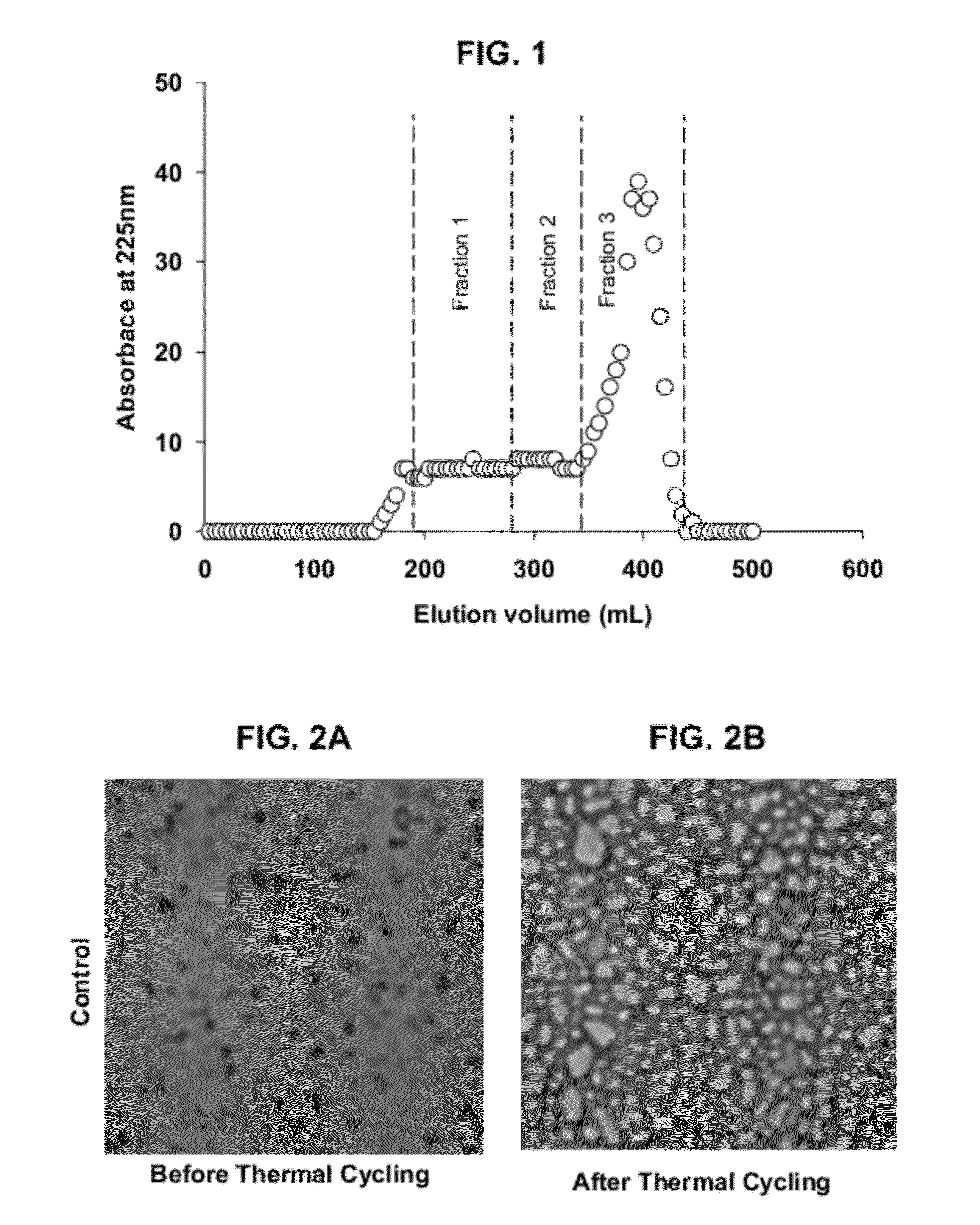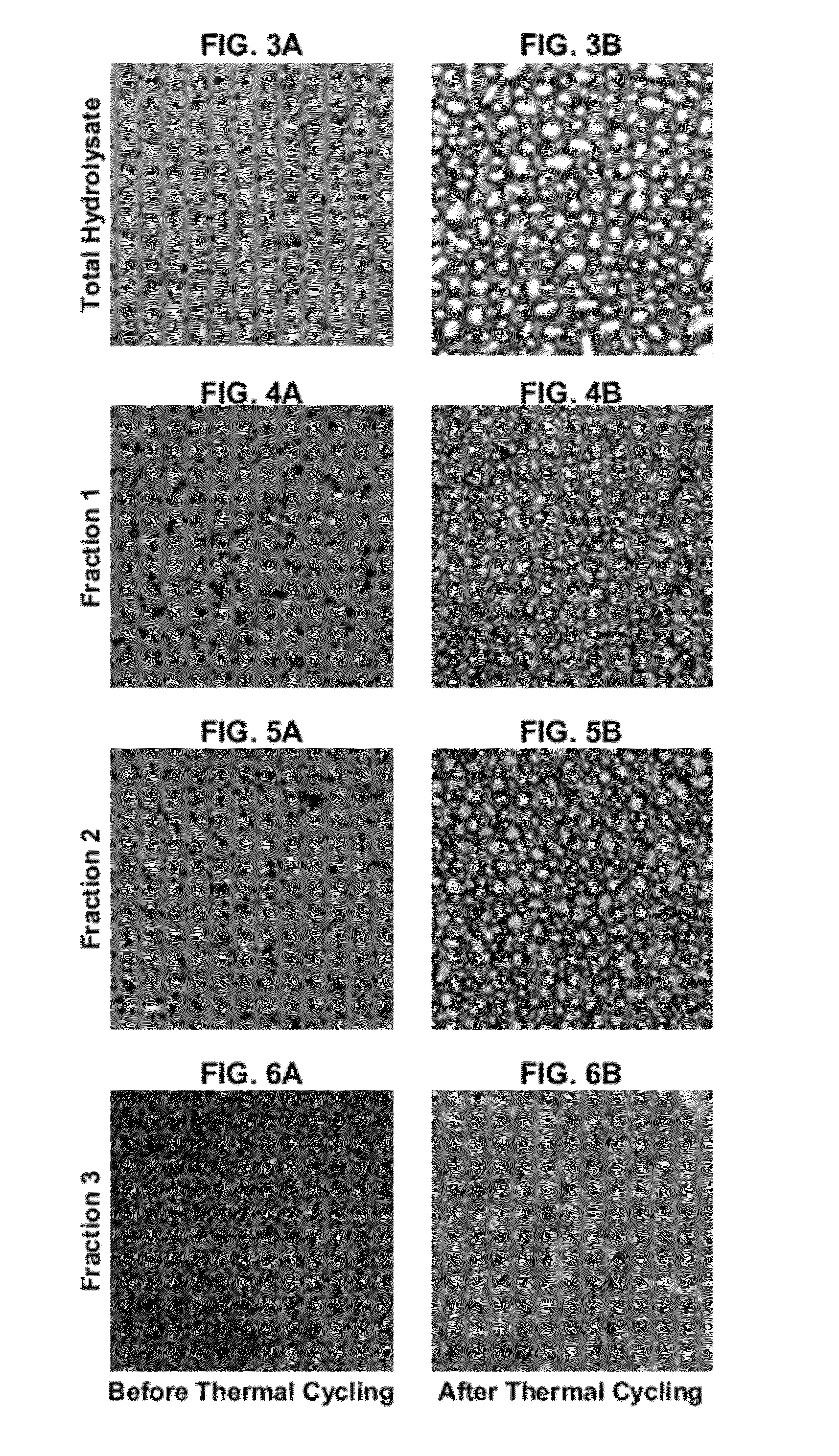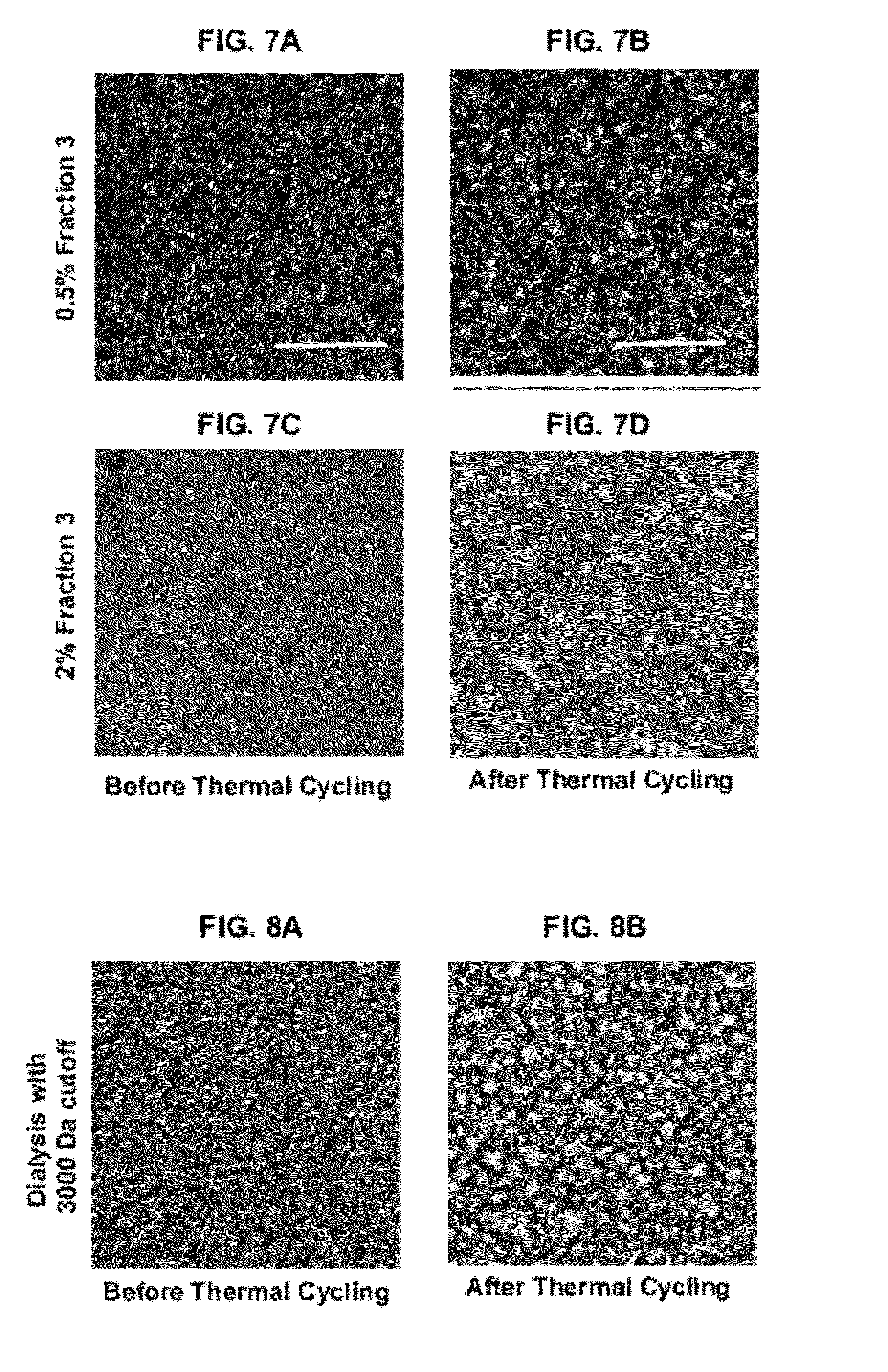Inhibition of ice crystal growth
a technology of ice crystal growth and inhibition, which is applied in the field of food quality improvement, can solve the problems of affecting the structure and textural changes of foods, and affecting the quality of food, and achieve the effect of improving the food quality of frozen desserts
- Summary
- Abstract
- Description
- Claims
- Application Information
AI Technical Summary
Benefits of technology
Problems solved by technology
Method used
Image
Examples
example 1
[0118]In this example, a gelatin hydrolysate was obtained by hydrolyzing a 20 wt % solution of gelatin in 1 M Na2CO3 containing 10 mM cysteine using papain at 37° C. and pH 9.0 for 10 min at an enzyme-to-gelatin weight ratio of 1:100.
[0119]FIG. 1 shows the elution profile of gelatin hydrolysate. Based on equation 1 (shown above), the molecular weight of peptides in the hydrolysate ranged from approximately 3,200 to 22,400 Da.
[0120]The 5 mL fractions were pooled into three major fractions (Fractions 1-3) according to decreasing molecular weight, and the pooled fractions were lyophilized. It should be noted that the viscosity of 4% gelatin hydrolysate in water was less than about 1.3 mPa·s, and therefore the effect of the 4% gelatin hydrolysate on the viscosity of the ice cream mix is assumed to be negligible.
[0121]FIGS. 2A and 2B show the effect of ice crystal growth on a control sample of the ice cream. FIG. 2A shows that control ice cream at about −40° C. before thermal cycling, wh...
example 2
[0129]To further confirm if the molecular size of gelatin peptides was critical for their inhibitory effect on ice crystal growth, a second sample was prepared. Papain digestion of gelatin was performed in water at pH 5.2 and at pH 7.0, 20% gelatin (type 225B40) in water, temperature 37° C. at a hydrolysis time of about 10 minutes and a papain-to-gelatin ratio of 1:100 to generate peptides with different molecular weight distribution profiles. After digestion and inactivation of papain by heat, the pH of the hydrolysates was adjusted to 7.0 and lyophilized.
[0130]FIG. 9 shows the elution profiles of the hydrolysates formed as described above on a Sephadex G-50 gel permeation column. As shown in FIG. 9, the pH 5.2 hydrolysate contained polypeptides with a broad molecular weight distribution ranging from about 3,300 to about 31,000 Da, with a maximum distribution of about 12,000 Da. By contrast, the pH 7 hydrolysate contained a narrow molecular weight distribution of polypeptides rangi...
example 3
[0132]In this example, gelatin hydrolysate was obtained by treating a 20 wt % gelatin in water at pH 7.0 with papain at various enzyme-to-substrate (E / S) weight ratios for 30 min at 37° C.
[0133]FIG. 14 shows elution profiles of gelatin hydrolysate resulting from the various E / S ratios. The E / S ratio was in weight ratio of enzyme in liquid form (2.64 Anson units / g) to dry weight of gelatin. The elution profile of the hydrolysate on the Sephadex G-50 column shifted to the right as the E / S ratio was increased, indicating that the average molecular mass of peptides liberated in the hydrolysate decreased with increasing E / S ratio.
[0134]FIGS. 15A-G show the effects of the above gelatin hydrolysate (unfractionated) on ice crystal growth in the ice cream mix after seven thermal cycles between −14 and −12° C. at 4 wt % level. The hydrolysates obtained with an E / S ratio of 1:15 to 1:10 exhibited the maximum ice crystal growth inhibition activity.
[0135]FIG. 16 shows the MALDI-TOF molecular mas...
PUM
| Property | Measurement | Unit |
|---|---|---|
| glass transition temperature | aaaaa | aaaaa |
| storage temperature | aaaaa | aaaaa |
| freezing point | aaaaa | aaaaa |
Abstract
Description
Claims
Application Information
 Login to View More
Login to View More - R&D
- Intellectual Property
- Life Sciences
- Materials
- Tech Scout
- Unparalleled Data Quality
- Higher Quality Content
- 60% Fewer Hallucinations
Browse by: Latest US Patents, China's latest patents, Technical Efficacy Thesaurus, Application Domain, Technology Topic, Popular Technical Reports.
© 2025 PatSnap. All rights reserved.Legal|Privacy policy|Modern Slavery Act Transparency Statement|Sitemap|About US| Contact US: help@patsnap.com



